 |
| Category: Badges |

|
|
|
|
|
|
History of the RSM's
Badge + WO1 and WO2: Page 2 |
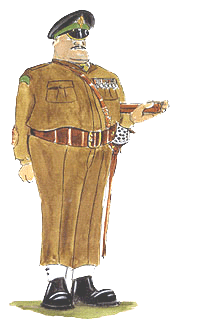 |
Information
Sheet
Warrant
Officers of the British Army
By
Mike Comerford
http://www.oldstuff.myagora.net/powerload/ordnance/index.htm
Warrant
Officers were first introduced into the British Army on the 1st
January 1879. A class of Warrant Officers was constituted, "to assist
in the discharge of the subordinate duties of the Commissariat and Transport
and of the Ordnance Store Departments of our Army, to be denominated
'Conductors of Supplies' and 'Conductors of Stores' respectively. |
|
Their
position in our Army shall be inferior to that of all commissioned
officers and superior to that of all noncommissioned officers. Conductors
shall at the same time have full power to exercise command over any
subordinates of the Departments of our Army, or noncommissioned officers
or soldiers of our Army, who may be placed under their orders ". For
the purposes of this article I shall call these first Warrant Officers
Group (i)
So successful was the
introduction of Conductors of Supplies and Stores that further Warrant
Officers were introduced, Master Gunners to the Royal Artillery,
Schoolmasters and Paymasters. All appointed to Group (i)
A new class of Warrant Officer, Group
(ii) was soon to follow, and with the onset of World War One a class of
Warrant Officer. as described by the following Royal Warrant:  |
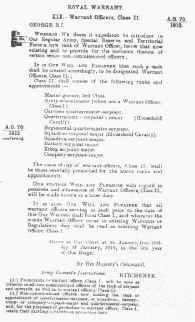 |
|
It is at this stage
that the question of identifying badges of rank started to become
confused. Warrant Officer's of Group (i) wore the 'Crown in Wreath' and
Warrant Officers of Group (ii) the 'Large Crown' on the sleeve.
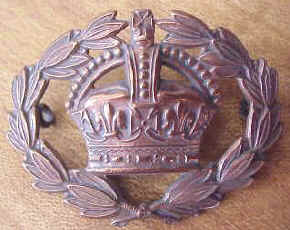 |

|
| Above.
Large Crown WO Group (ii) |
| Left.
Crown in Wreath WO Group (i) |
These Warrant
Officers now became Class One, with groups (i) & (ii) being
identified by different badges, Warrant Officer Class One, Group (i) by
the 'Crown in Wreath' and Warrant Officer Class One, Group (ii) by the
newly introduced 'Royal Arms'; The 'Large Crown' then becoming the badge
of the Warrant Officer Class Two: |
|

|
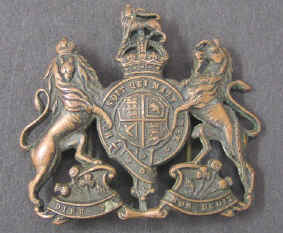
|
|
Warrant Officer Class 1
Group (i) |
Warrant Officer Class 1
Group (ii) |
 |
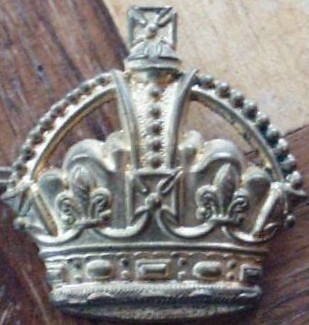 |
|
Warrant Officer Class 2
(gilded & plain) |
|
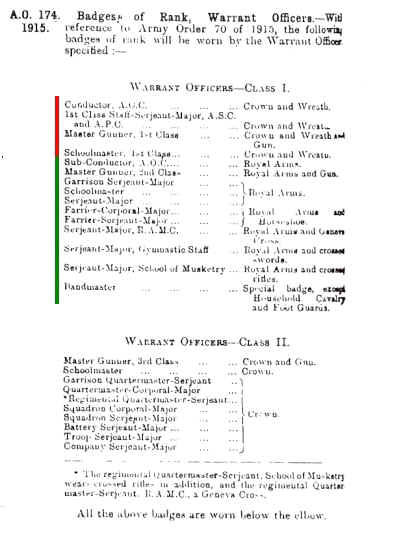
|
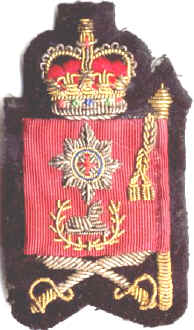
Rank badge of a Company
Sergeant Major in the Coldstream Guards
|
|
In 1918 a further
modification was made, with the introduction of the 'Royal Arms in
Wreath' for Warrant Officers Class One, Group (i) ‑ Warrant
Officers Class One, Group (ii) continued to wear the 'Royal Arms' At
this time the 'Crown in Wreath' was discontinued.
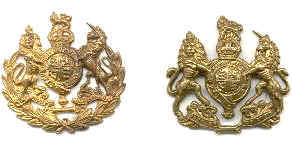 |
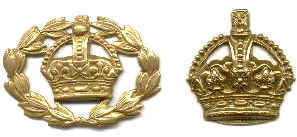 |
| Warrant
Officer Class 1 Group (i) |
Warrant
Officer Class 1 Group (ii) |
Use
discontinued except as below |
Warrant
Officer Class 2 |
In a 1938 Army
Council Instruction (A,C.I. 398 of 1938) the 'Crown in Laurel Wreath'
was allocated to Warrant Officers Class 11 on the introduction of
Warrant Officer Class III who in turn were allocated the 'Large Crown'
to wear. (This rank was placed in suspension in 1940, technically
however this still remains as a rank)
This was to continue
till 1947 (A.C.I. 991 of 1947) when it was decided that Warrant Officers
Class 2 graded as Quartermaster-Sergeants would revert to wearing
the 'Crown in Laurel Wreath' and all other Warrant Officers Class 2 and
any remaining Warrant Officers Class 3 would wear the 'Large Crown'
These changes were
adapted by the Dominion and Commonwealth Armies where the Appointment
Names of Warrant Officers were not always the same, but classes of
Warrant Officers were closely followed.
|
|
Dates badges worn (British
Army) |
|
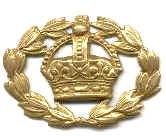
|
c1900
to 1918
|
Warrant
Officer Class One, Group (i)
|
| 1938 to 1947
|
Warrant
Officer Class Two
|
| 1947 to date
|
WO2 Quartermaster-Sergeants'
|
|
|
|
|
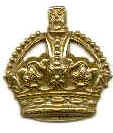
|
c1900
to 1915
|
Warrant
Officer Class One, Group (ii)
|
| 1915
to 1938
|
Warrant
Officer Class Two
|
| 1938
to 1947
|
Warrant
Officer Class Three
|
| 1947
to date
|
Warrant Officer Class Two
|
|
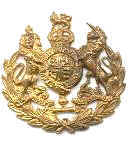
|
1918
to date
|
Warrant
Officer Class One, Group (i)
Note: In Australia the wreath now
signifies that the wearer is the Senior Non Commissioned Officer in the
Service; i.e. Warrant Officer of the Navy, RSM of the Army or Warrant Officer
of the RAAF |
|
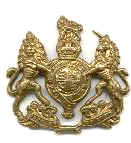
|
1915
to date
|
Warrant
Officer Class One, Group (ii)
Note. In Australia the Royal Arms have
been replaced by the Australian Coat of Arms. |
|
©
Copyright,
M Comerford 2004 All rights reserved.
Parts
may be reproduced providing source credit is given.
|
- 1965 St Edward's Crown (Queen's
Crown) in wreath as worn by UK Regimental Quarter-Master Sergeants
(RQMS WO2).
|
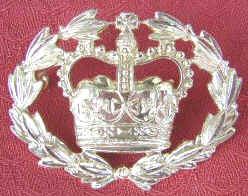 |
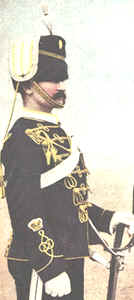 |
- The Regimental Sergeant-Major of
the 13th Hussars on the left is in full dress dismounted
order.
- He wears gold cord braiding on his
tunic and round the edge of his collar.
- His cap-lines are also gold.
- At that time, the RSM's badge of
rank was a crown worn just over the Austrian knot on his right
sleeve.
|
|